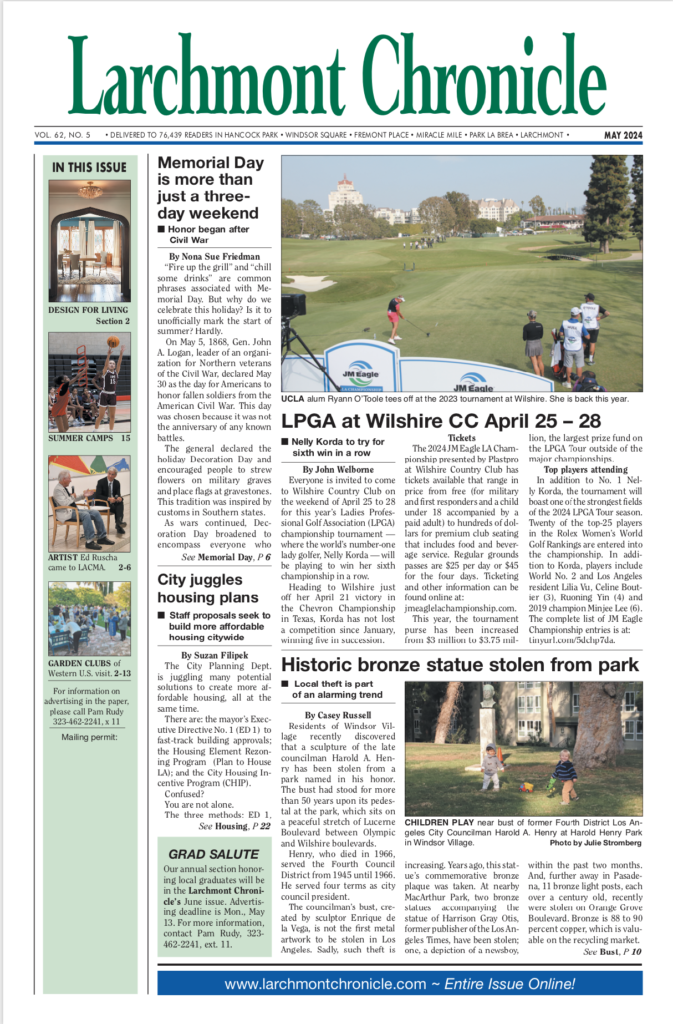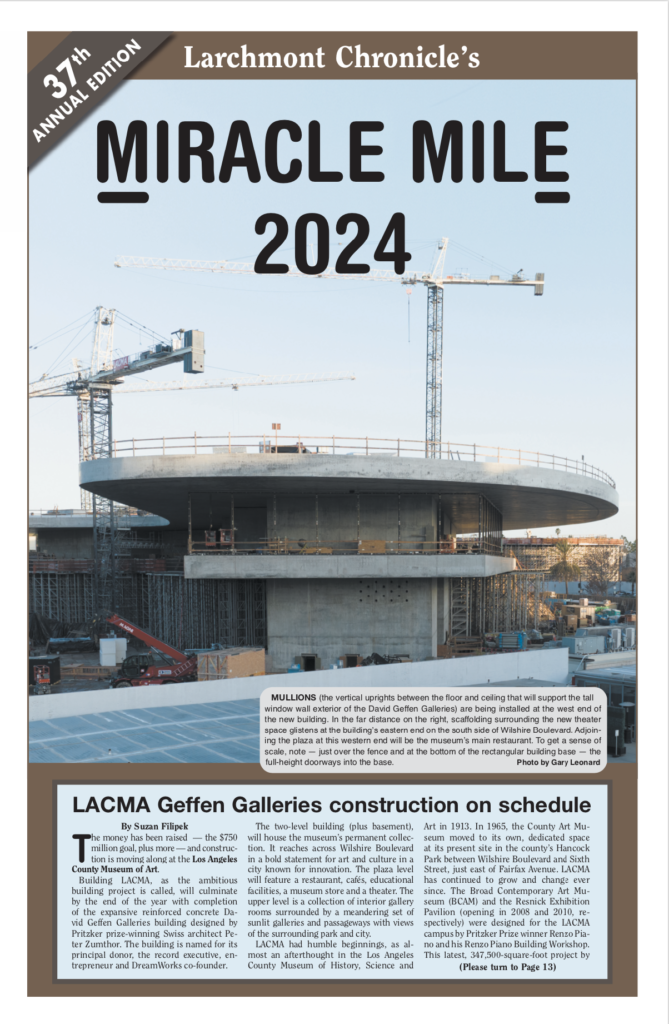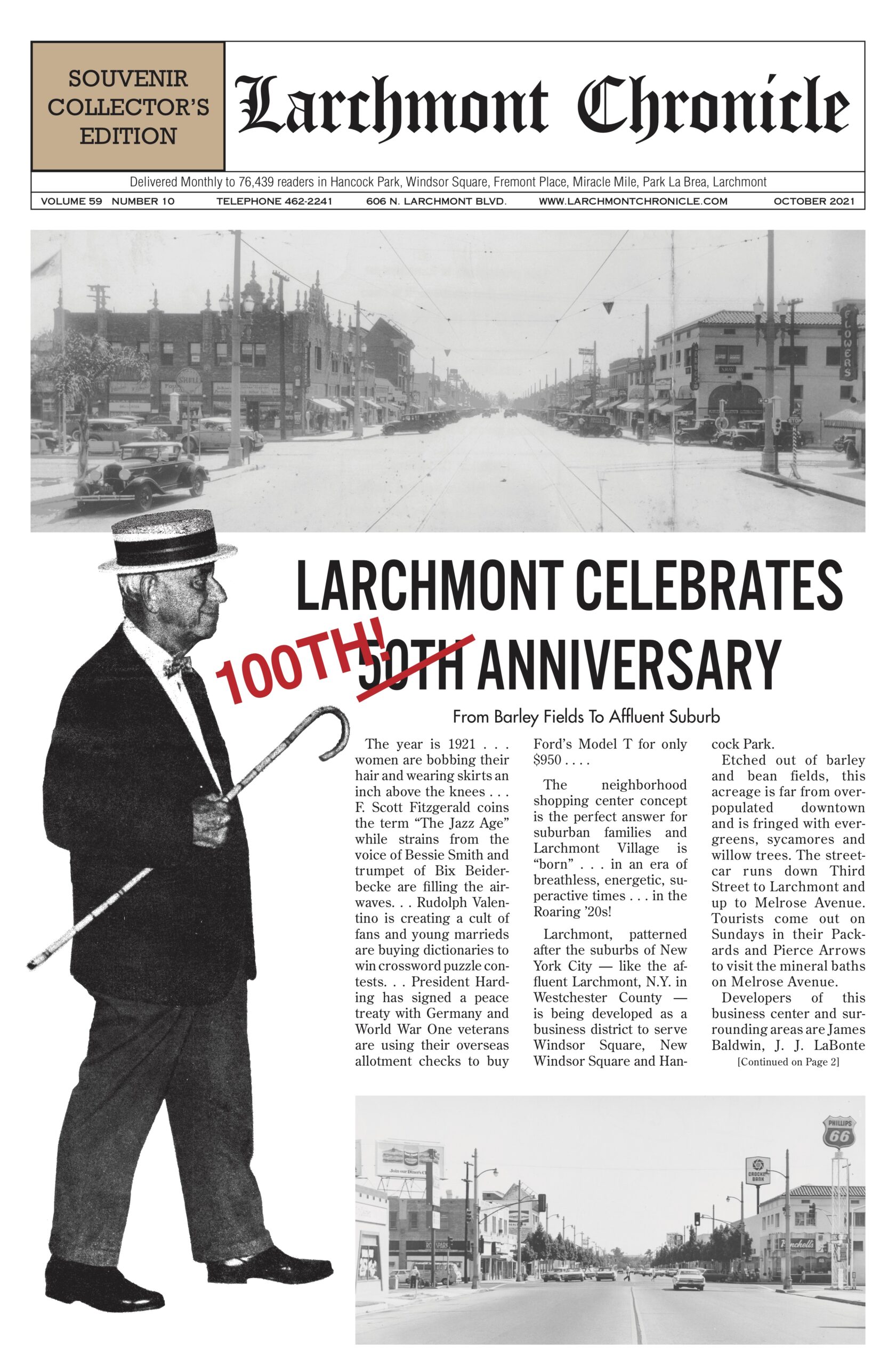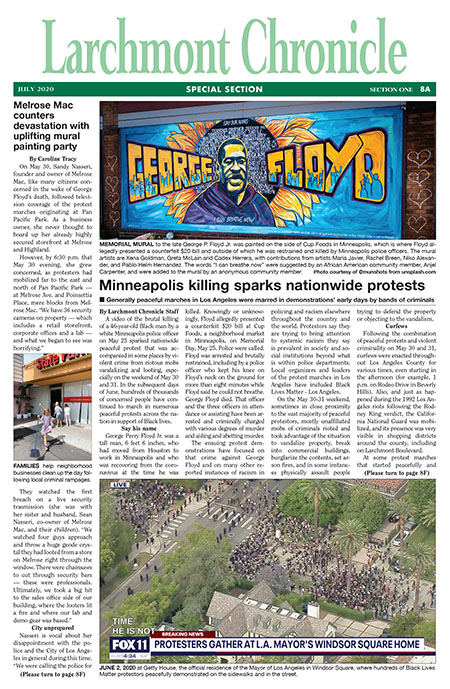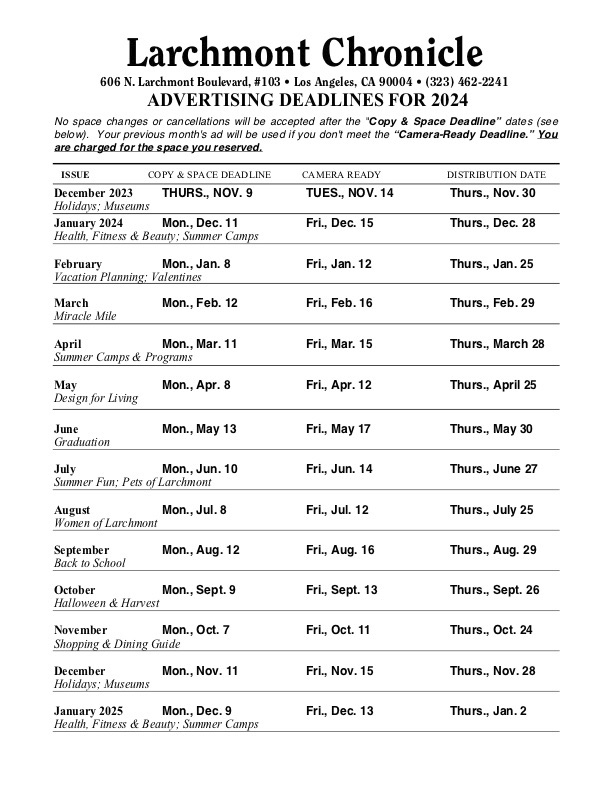It took a village, but Giorgio is finally getting some help
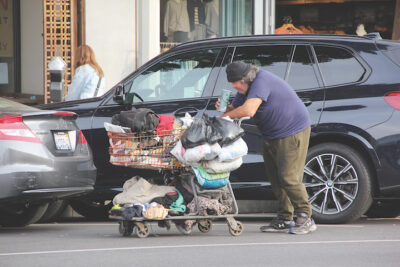
GIORGIO and his cart, circa early 2021.
Driving down Larchmont Boulevard, I can’t help but glance in the direction of the newsstand and Peet’s Coffee, places where unhoused Larchmont regular Giorgio used to stand with his shopping cart, waiting for gifts of money, food and Advil. However, as the Larchmont Chronicle reported in the May 2022 issue, the Los Angeles County Department of Mental Health picked him up to get him help. According to eyewitness accounts, he did not go willingly.
I like to imagine Giorgio washed, shorn, well-fed and sitting in a garden sipping tea while waiting to move into his new home. Although no gardens are involved — and in spite of privacy concerns — bit by bit, email by email, phone call by phone call, more has been revealed about what actually is happening with Giorgio since he left Larchmont.
Where is Giorgio?
According to Isidro Alvarez, the deputy public conservator/administrator of the Los Angeles Dept. of Mental Health, who picked up Giorgio on Larchmont, he was taken to an undisclosed hospital (all Alvarez would reveal about the location is that it is not in Hollywood). Giorgio is still there.
“He is still getting mental health treatment,” Alvarez confirmed. “Currently the team’s goal is getting him assistance. Connect him to services. Help him obtain Social Security or other benefits he’s entitled to. Get him into permanent housing near the neighborhood he was from.” Larchmont, one supposes.
Notwithstanding Giorgio’s protestations in the past about not wanting help, it sounds as though he is cooperating with his care. “He seems fine thus far,” said Alvarez. “But he’s actually going to be in the hospital for at least another month.”
It is likely we will see Giorgio again. As Alvarez explains, “We understand the community was involved with him. We will take him back [to Larchmont Boulevard] so they see he’s doing well.”
“Most often when homeless people are picked up for evaluation, they are brought to a hospital,” explained Nathan Sheets, executive director of The Center, a nonprofit that helps the homeless. In our area and throughout Hollywood, there is a usually-designated hospital that is not popular with Sheets. “That’s the worst hospital,” said Sheets. “They’re quick to discharge.”
In fact, according to Sheets, it’s common that a psychiatrist’s evaluation there consists of a single question, “How are you?” If the answer given is “Fine. Why am I here?” the patient will be released. Outreach workers from The Center have reported finding their homeless clients, post-hospital evaluation, on a bus bench at Vermont Avenue and Sunset Boulevard still in hospital gowns.
To know that Giorgio was not released back into the wild and may soon have a permanent bed and roof over his head is astounding. How, after so many years on the street, did Giorgio finally get help?
How homeless are helped
Josh Hoffman, Coordinated Entry System (CES) regional coordinator of The Center, explained that it takes time to win someone’s trust enough to accept help. According to Christine Stellino, director of programs at The Center, the number of people who accept help versus those who turn help down is 50/50. Giorgio always turned help down.
Nathan Sheets tells the story of a homeless multiple amputee who stayed on a corner in Hollywood. It took nearly 10 years to gain his trust and get him into a conservatorship, which is when someone else becomes responsible for the client’s decisions. Now that man is in housing in the Valley and is doing very well.
Places such as The Center are usually the first to establish contact with a homeless person. Generally, once help is accepted, the person is pointed in the direction of particular services, which involve a labyrinth of interconnected organizations, both nonprofit and governmental, which the homeless person must visit for, say, help with benefits or addiction. In the Larchmont and Hollywood areas, only the Salvation Army has the Los Angeles Homeless Services Authority (LAHSA) contract for housing.
Giorgio went straight from the Boulevard to getting connected while in the hospital. Why?
A plan was hatched
Giorgio was particularly recalcitrant when approached by outreach workers. Only those who are deemed a danger to themselves or others can be held against their will, and I heard months ago that a plan was being hatched that would allow Giorgio to be helped in spite of himself. The Chronicle learned that Giorgio was deemed undernourished and therefore a danger to himself.
By that measure, every homeless soul we see at stop lights with signs asking for help, sitting in tents stationed in front of empty storefronts or huddled in sleeping bags in the middle of busy sidewalks is undernourished. So why was Giorgio labeled malnourished and scooped up, rather than any of them?
Squeaky wheel gets the grease
This is a neighborhood that isn’t afraid to call attention to its problems and demand solutions. In the November 20, 2019 article, “Who complains the most about homelessness in LA?” published in the “Crosstown LA” online neighborhood newspaper, writer Gabriel Kahn cross-referenced numbers by neighborhood from the 2019 homeless count with the number of homeless-related complaints called in to the city’s 311 line. As Kahn reported, the number of unsheltered homeless individuals in Larchmont Village was 3.21. The number of neighborhood-originated 311 calls received in the first months of 2019 was 147, for a calls-per-homeless ratio of 45.69, second only to Bel Air. By way of comparison, Hollywood, with one of the highest concentrations of homeless in Los Angeles, had a ratio of 1.62 for an unsheltered homeless population of 1,191.33.
Giorgio was helped because we demanded it. We did it together with articles about him in the Chronicle and with Marilyn Wells’ 2021 six-part homelessness column, “The NIMBY Diaries,” also in this paper, and with her contacting The Center to put Giorgio on its homeless outreach radar. We did it when a woman emailed me about Giorgio sleeping in her driveway and when other neighbors both complained about Giorgio and worried about him. It was the serendipity of my calling Councilmember Mitch O’Farrell’s office the day after his field deputy, George Hakopiants, had seen Giorgio while on a ride-along with LAPD Olympic Divison Officer Joseph Pelayo. Hakopiants wanted to help Giorgio, too, and O’Farrell and his team helped make the county aware of Giorgio. We all kept the attention on Giorgio. It’s the principle of the squeaky wheel at work.
“What happened in Larchmont [for Giorgio] is an example of what should happen,” notes Sheets. “Being embraced by the community made the difference.”
This is the fourth part in a series.
Category: News

